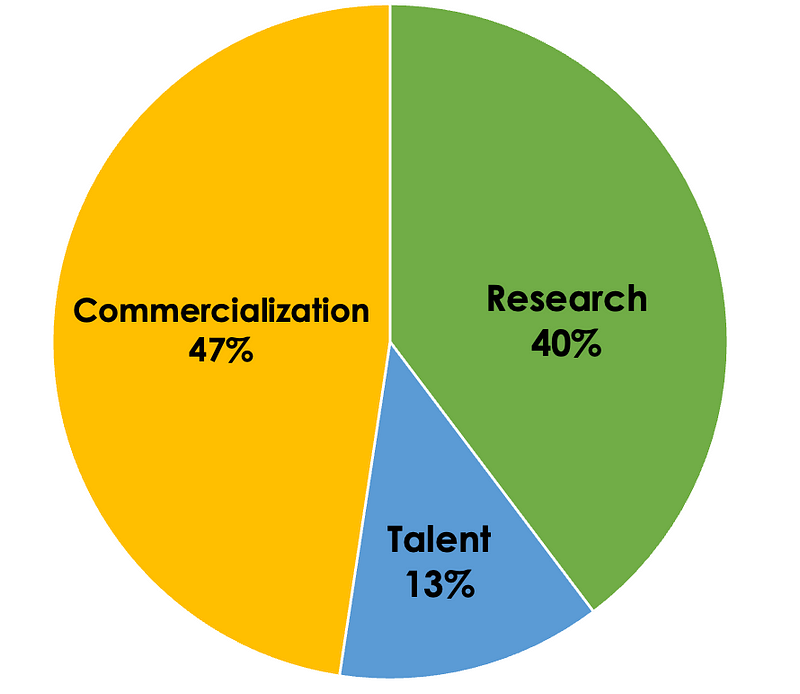The Quantum Future: Canada’s National Strategy Unveiled
Written on
Chapter 1: Introduction to the National Quantum Strategy
The Canadian Government recently unveiled its National Quantum Strategy (NQS), aiming to steer the evolution of quantum sciences and technologies within the country. This strategy not only focuses on technological advancements but also emphasizes generating thousands of jobs in the quantum field, preparing the economy for a future driven by quantum innovation. With a commitment of $360 million, as outlined in the 2021 budget, Canada seeks to bolster its global leadership in quantum research while nurturing its quantum technology landscape and workforce.
Why Quantum Technologies Are Essential
Quantum science and technologies are poised to revolutionize key sectors, including finance, communications, cryptography, sensor technology, materials science, energy, and pharmaceuticals. The government acknowledges the potential of this burgeoning field and aims to enhance both research capabilities and human expertise. A recent McKinsey report highlighted a “talent gap” that could hinder the growth of the quantum sector unless proactive investments and strategies are implemented.
What Constitutes the National Quantum Strategy (NQS)?
The National Quantum Strategy encompasses three primary missions:
- Computing Hardware and Software: As a transformative and rapidly advancing technology, quantum computing necessitates innovations in both software and hardware. The objective is to establish Canada as a global leader in the ongoing development and application of these technologies.
- Communications: Effective data transmission is vital for modern communication and banking. Quantum computers and algorithms pose a significant threat to current encryption standards (e.g., RSA). The NQS aims to prepare Canada for the post-quantum cryptography era.
- Sensors: Quantum sensors have the potential to enhance navigation and sensory capabilities. The strategy supports Canadian innovators and early adopters of these new sensing technologies.
These missions will be propelled by investments in three core areas: research, talent, and commercialization. Below is a summary of the investment distribution across these pillars.

The research pillar is allocated $141 million to facilitate basic and applied research, fostering new solutions and innovations. The talent pillar will receive $45 million to cultivate and retain quantum expertise while attracting skilled professionals from around the globe, addressing the talent shortfall within the sector. The commercialization pillar is set to receive $169 million to transform research into scalable commercial products and services that will benefit Canadians and the global market.
Leadership in the Quantum Strategy
The Ministry of Innovation, Science and Industry has spearheaded the strategy's launch. Dr. Raymond Laflamme from the Institute for Quantum Computing at the University of Waterloo and Dr. Stephanie Simmons from Silicon Quantum Technologies at Simon Fraser University, who is also the founder and Chief Quantum Officer of Photonic Inc., will co-chair a new Quantum Advisory Council tasked with providing expert guidance for the strategy's implementation.
Progress So Far
Initiatives under the strategy are already in motion. The Natural Sciences and Engineering Research Council of Canada (NSERC) is investing $137.9 million to bolster Canada’s strengths in quantum science and develop a robust talent pipeline. Mitacs is contributing $40 million to support the recruitment, training, and retention of highly qualified personnel in quantum science and technology. Additionally, the National Research Council of Canada (NRC) is launching a $9 million program, named the Quantum Research and Development Initiative (QRDI), to foster collaboration among government, academia, and industry to advance quantum technologies under the NQS.
Global Investments in Quantum Technology
Around the world, significant investments in quantum science and technology are being made by governments, private companies, and venture capitalists. The Netherlands has allocated over half a billion dollars from its national growth fund to accelerate quantum technology initiatives. SandboxAQ, a spin-off from Google, recently raised a substantial funding round from leading investors. The U.S. government has earmarked about $900 million for quantum information science in the fiscal year 2022, while China is reportedly investing $10 billion in quantum computing research and development. Other nations, including India, Japan, and Germany, are also heavily investing in quantum science and technology.
Conclusion
The race to innovate in quantum hardware, software, and talent is well underway. Breakthroughs in quantum science and technology will fundamentally transform our interaction with the physical world and the exchange of information. Both governments and private entities are committing extensive resources to master quantum technologies. Leading economies such as the U.S., Canada, and the European Union are at the forefront, while emerging economic powers like India and China are also making significant strides.
You might also enjoy reading my other stories:
- Carbon Credits Simply Explained
- ChatGPT and Neuralink
Subscribe to DDIntel Here.
Chapter 2: Insights from Quantum Investments
In the realm of quantum technologies, timely investments are crucial. The following video discusses the urgency of investing in quantum technology, particularly in the context of post-quantum cryptography.
The second video explores current trends in quantum investments, shedding light on where the most significant financial commitments are being made today.